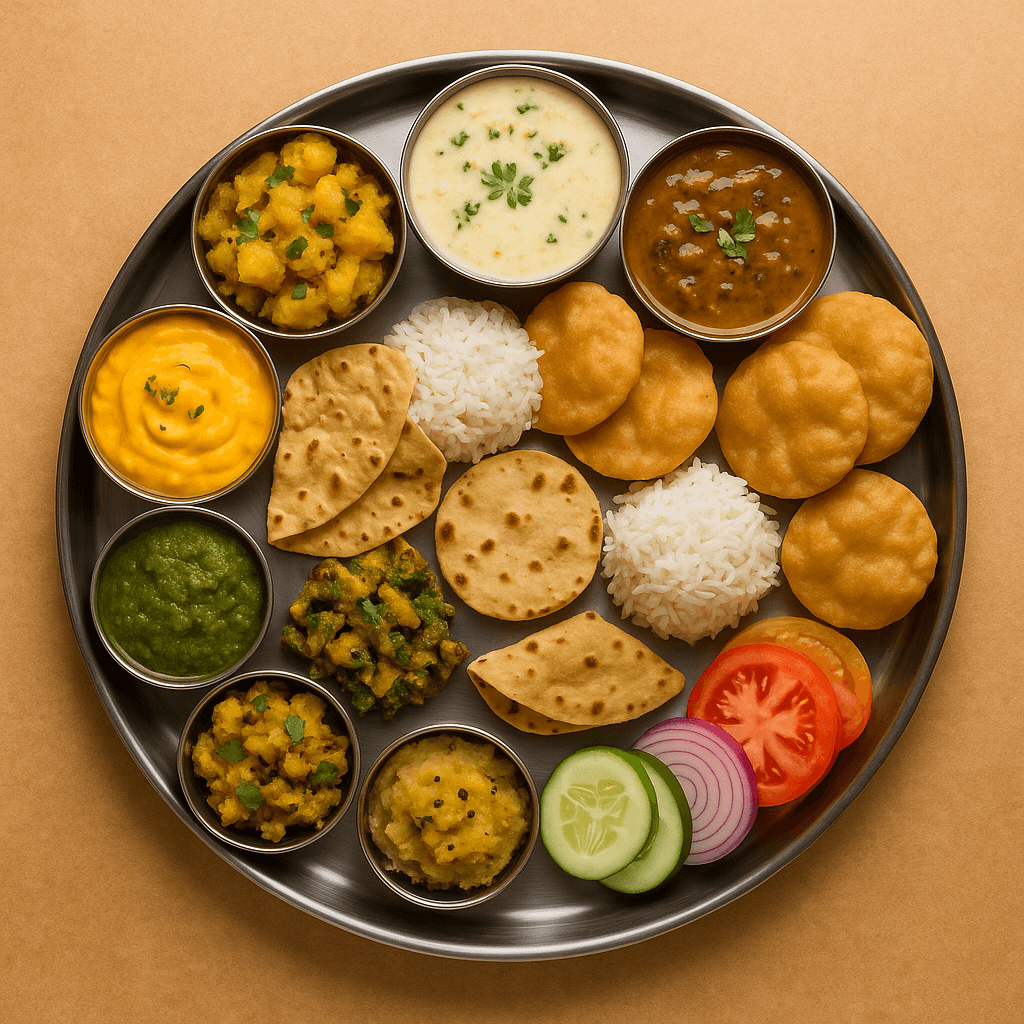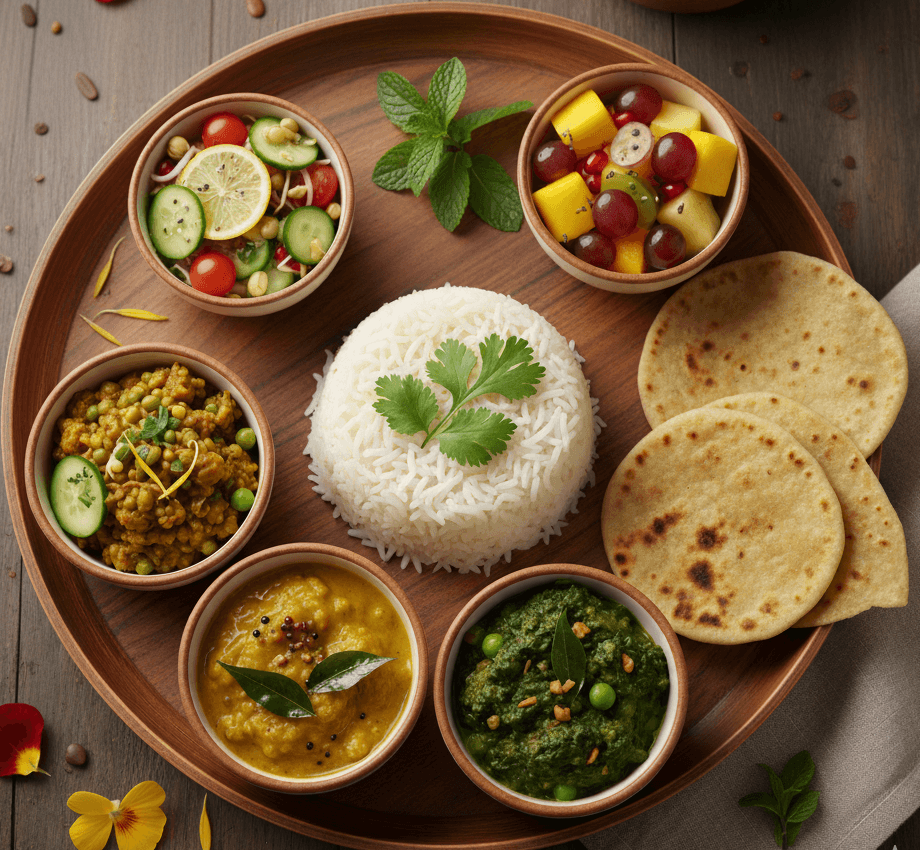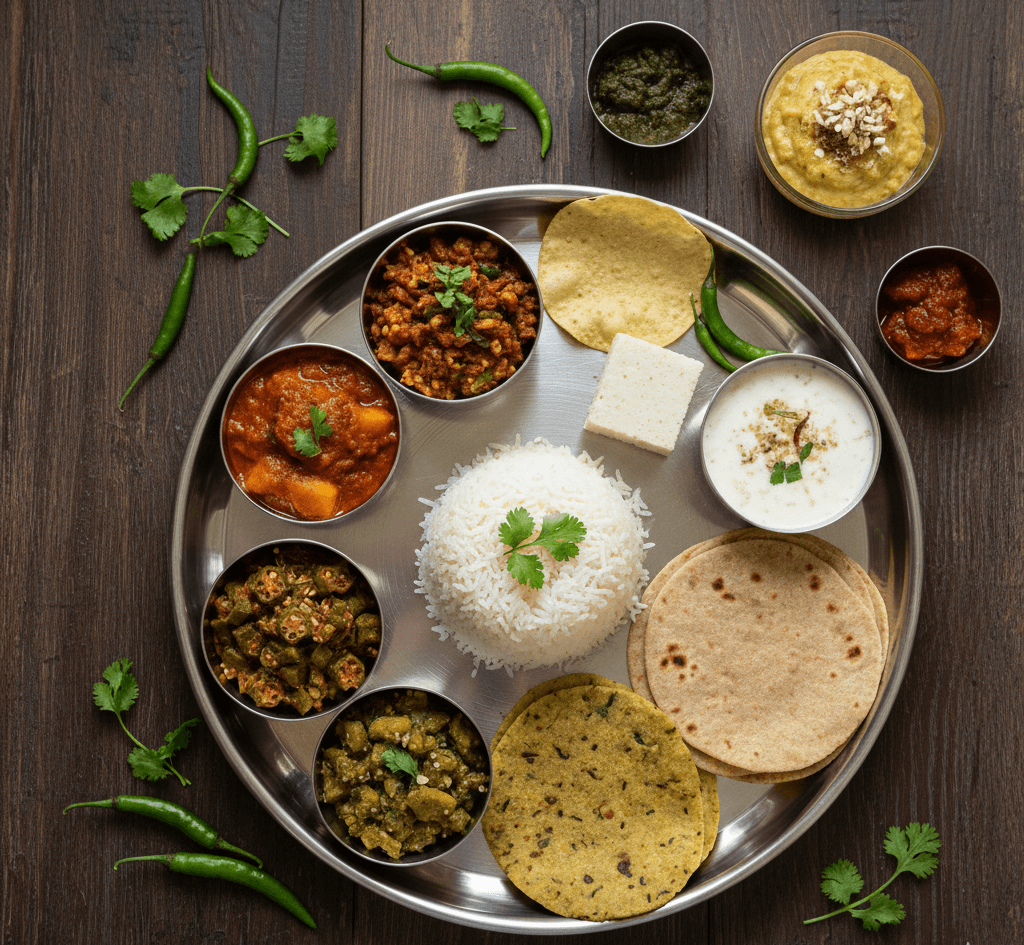How Gujarat Perfected Plant-Based Living–From Jain to Sattvic

India is sometimes referred to as the world capital of vegetarianism, but among its multicultural cuisine, it is Gujarat that truly is a champion of vegan life. From its spiritual origins in Jainism and Vaishnavism to its modern adoption of holistic eating philosophies such as Sattvic living, Gujarati food culture is not merely a cuisine—it’s a lifestyle. While the rest of the world debates ethics and ecologism surrounding plant-based eating, Gujarat’s ancient culinary heritage demonstrates that vegetarian eating can be as delicious, spiritually resonant, and nutritionally comprehensive as anything else. In this blog post, we’ll explore how Gujarat has woven plant-based values into every corner of its kitchen—from Jain cuisine’s non-violent cooking principles to the healing properties of Sattvic meals, all the way to its enduring community-driven food customs.
Jain Cuisine: The Art of Ahimsa on a Plate

Jain food is perhaps the most disciplined expression of fruitarian living anywhere in the world. Gujarat boasts a big Jain population, and this has had an enormous impact on the local diet. In contrast to popular vegetarian diets, Jain foods do not include root vegetables such as onions, garlic, potatoes, carrots, and beets. Why not? Because pulling up a plant will kill it completely and will injure microorganisms residing in the ground. That’s based on the Jain philosophy of Ahimsa (non-violence), even applying it to microscopic life. But instead of being restrictive, Jain cuisine is an exercise in creativity. Chefs utilize raw bananas, bottle gourd, ridge gourd, lentils, legumes, and milk to produce rich and filling meals. For example: Handvo (fermented lentil cake) is prepared without onion or garlic, but has deep flavor from sesame seeds and tempered spices. Khatta Dhokla, another Jain-compliant snack, employs citric acid or yogurt as a source of tartness rather than fermented batters. Jain cooks also abstain from eating after nightfall to synchronize digestion with natural rhythms—a concept contemporary science now endorses.
Sattvic Foods: Healing the Mind, Feeding the Soul
In yogic and Ayurvedic philosophies, food is divided into Sattvic (pure), Rajasic (exciting), and Tamasic (dull) groups. Gujarat’s Sattvic food focuses on purity, balance, and mental sharpness, excluding not just meat but also stimulants such as caffeine, fermented foods, onion, and garlic.
Common Sattvic ingredients are: Fresh vegetables, Whole grains, Fresh fruits, Cow’s milk and ghee. Tulsi, mint, and coriander herbs.
A Sattvic Gujarati lunch could be: Khichdi (lentils and rice cooked with very few spices),Sabzi (a simple vegetable dish) prepared using ridge gourd or bottle gourd,Freshly homemade chapatis,Glass of buttermilk (chaas) with cumin
This type of diet is not merely about nutrition. It’s about the expansion of consciousness. A number of ISKCON temples and yoga centers in Gujarat provide Sattvic food as prasad (blessed food), disseminating the concept that eating can be a spiritual practice, not merely a bodily requirement.
The Everyday Gujarati Thali: Diversity on a Single Plate

The classic Gujarati thali is not just a meal—it’s a tradition. Served in homes and restaurants, it demonstrates how vegetarianism survives through harmony, diversity, and convention. A generic thali may have:
- Shaak (vegetable curries such as aloo-tamatar, bhindi, or turia)
- Dal or Kadhi (a spiced yogurt-based soup)
- Rotli or Thepla (whole wheat flatbreads)
- Bhaat (rice)
- Farsan (snacks such as dhokla or patra)
- Pickles, chutneys, papad
- Sweets such as shrikhand or mohanthal
All ingredients are measured to encourage Ayurvedic harmony of salty, sweet, bitter, sour, astringent, and pungent tastes. Significantly, most Gujaratis make this with no or minimal onion or garlic, particularly during religious months such as Paryushana or Shravan. The thali does something most valuable: It reminds us that vegetarianism is not about missing out; it’s about having more in balance.
Fermented Foods and Gut Health
Though Sattvic diets shun fermentation, everyday Gujarati food has a clever, gut-balancing philosophy towards fermented foods. Foods such as dhokla, idada, handvo, and khaman employ naturally fermented batters made from rice and lentils to enhance digestibility and gut bacteria—something lauded by today’s nutritionists. Foods such as chaas (buttermilk), regularly tempered with curry leaves and asafoetida, function as natural digestive tonics and cooling agents in Gujarat’s intense heat.
Seasonal & Local Eating: Sustainability by Default
Gujarat’s plant-based culinary tradition is also deeply seasonal. Ingredients change with the climate:
- Summer: Mangoes (used in aamras), cucumbers, and buttermilk for cooling
- Monsoon: Fritters like bhajiyas with green chutneys
- Winter: Fresh green garlic, methi (fenugreek), undhiyu (a slow-cooked mix veg), and jaggery-laden sweets like sukhdi
What modern “locavore” and “farm-to-table” movements advocate today, Gujarat has practiced for centuries.
The Global Vegan Wave—and Gujarat’s Quiet Confidence
While much of the West is only recently warming up to the plant-based revolution, Gujarat has quietly lived this lifestyle for generations. In fact, Ahmedabad and Surat consistently rank among India’s most vegetarian cities, and vegan cafés and Jain-friendly restaurants are popping up in places like Vadodara and Rajkot to cater to both domestic and global audiences. From vegan theplas to mock-meat-free patra rolls, entrepreneurs in Gujarat are innovating modern menus that retain traditional ethics.
Conclusion: Gujarat’s Legacy of Compassionate Eating
Gujarat’s mastery of plant-based living is not a fad, nor a restrictive obligation. It’s a philosophy grounded in compassion, health, sustainability, and cultural identity. Whether it’s through the non-violence of Jain cuisine, the mind-body purity of Sattvic meals, or the balanced indulgence of a Gujarati thali, this region offers a roadmap for the world to follow. In an age of climate anxiety and ethical eating dilemmas, Gujarat’s ancient food wisdom offers something powerful and timeless: plant-based living with soul.
